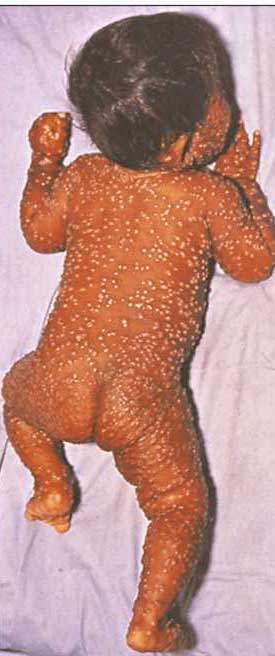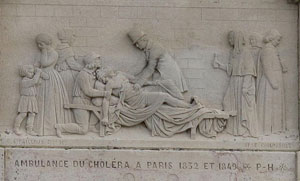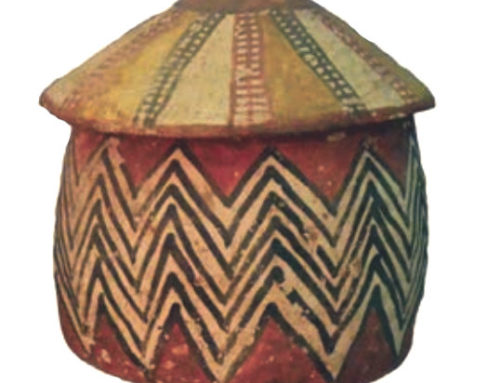With all this coronavirus stuff going on, what are some other epidemics and pandemic diseases from the past? What can we learn from them? Four lessons:
- Diseases change over time, and come and go. Typically diseases kill more people at first, and then gradually become less of a problem. This is because if they make most people so sick they can’t walk around, the disease can’t spread and dies out (this is mostly what happens with Ebola). Diseases that become endemic (that stick around) have to be, or evolve to become, mild enough that sick people walk around spreading them (Colds are a terrific example; measles, also, was once apparently much more dangerous than it is now.)
- Many diseases that are very serious in adults and especially old people are much less serious for children. They kill a lot of people at first, but later on, most people catch them as children and then they don’t get it again as adults, so the disease is thought of as not very serious, even though it would be serious for adults. (Chickenpox is a good example, and many other infant diseases like rubella or fifth disease.)
- A few diseases kill mostly young, healthy adults. These are much more frightening and disruptive than diseases that kill mainly old and sick people, or even diseases that kill mainly children. (The 1918 flu pandemic is a good example.)
- Vaccines work and are safe.
Malaria
One of the earliest diseases that we know of is malaria, which people get from mosquito bites. Malaria was already around in the time of the dinosaurs, and has spread all over the world now. Chinese doctors came up with the first effective treatment about 300 AD, and we still use that treatment today. Europeans brought it to the Americas, where Peruvian doctors came up with another effective medicine which we also still use today. The death rate is probably a little under 1%. In the United States, we pretty much got rid of malaria by poisoning all the mosquitoes in the 1960s, but malaria still kills a lot of people in Africa.
More about malaria
Tuberculosis
Tuberculosis was another early disease; it goes back at least to the Paleolithic, the early Stone Age. It’s a bacterium, and people catch it by breathing the air near a sick person. It wasn’t common until people started to live in cities, and then it spread more easily. It spread from Africa to the Americas in the bodies of seals, and from people to cows all over Africa, Europe, and Asia. We had no real treatment for it until the 1940s, when we developed antibiotics that can cure it. Before that, most people who got it eventually died of it.

A child with tuberculosis
More about tuberculosis
Measles
Measles is a virus, and people first caught it from their dogs. As they lived in bigger cities, measles found more chances to spread, so more people caught it. Measles seems to have gotten going in the Iron Age or in classical antiquity. At first, measles seems to have killed a lot of adults; the terrible plague Thucydides describes in classical Athens may have been measles. By about 900 AD, Islamic doctors knew that you caught measles from other people, and suggested quarantine to control it. But later it became a disease that children got that mostly had no lasting effects, though it was still very dangerous for adults. Most people stopped getting measles in the 1960s when doctors developed a good vaccine for it. If people stop getting vaccinated and catch it today, not just children but adults will get it, and it will be just as serious as it was at first: probably death rates of about .1 % of the people who get it (which is less than the coronavirus, but would shock people more because a lot of the people who died would be young and otherwise healthy).

A kid with measles
More about measles
Smallpox
The first recorded smallpox plague was in the time of the Roman Empire, in the second century AD (if it really was smallpox). It seems to have started in Central Asia and spread west to Europe and Africa and east to China. Unlike measles, smallpox never became just a children’s disease. It was always serious even if you caught it as a child. About two to five of every ten people who got smallpox died of it; that’s a mortality rate of 20% to 50%, as against the less than 1% we are looking at with the coronavirus. But once a lot of people in a city had had it, they were immune, so it was harder for smallpox to spread. There would be small outbreaks, and then it would die out again. About 1000 AD, Indian doctors figured out how to inoculate people against smallpox, and that helped to reduce the spread.

A baby with smallpox (from the CDC)
European settlers brought it to the Americas, where millions more people died of it: in the Americas, with no immunity, the mortality rate may have been as high as 60-90%. In 1796, a new, safer vaccine stopped smallpox, and nobody anywhere in the world has had smallpox since the 1970s.
More about smallpox
Bubonic plague (the Black Death)
The bubonic plague is a sickness that people catch from small wild rodents like rats and voles. It’s a bacterium, not a virus. Like smallpox, the bubonic plague got started in Central Asia and spread east to China and west to Europe and Africa. About 50% of people who caught it died; in the 1300s, about half the population of Europe and North Africa may have died of it. Again, quarantine helped. Today we cure it with antibiotics, so if you see a doctor for plague early on it is not a serious problem. They’re working on a vaccine.

A person with a bubo from bubonic plague on their leg
More about the Black Death
Cholera
Cholera has been around in India since at least 300 BC, but it evolved into a much more serious disease in the early 1800s. Cholera’s a bacterium and you catch it by drinking dirty water, or by eating crabs and oysters that have been living on dirty water themselves. As with the bubonic plague, more than half the people who got it died (more than 50%). Today, we have clean drinking water, and in addition there is a vaccine against it.

Cholera in Paris (1832 AD) – the Jesuits worked to cure people
More about cholera epidemics
Yellow fever
Yellow fever probably evolved in Africa, and, like cholera, developed from a less serious earlier illness. It’s caused by a virus. It came to the Americas with enslaved people, on the ships. Mosquitoes spread it from person to person, like malaria. Yellow fever probably killed about 14% of the people who caught it. Quarantines made a big difference in stopping yellow fever. Today, we have a vaccine against it, though there is still no cure.

Kids with yellow fever in Mississippi about 1870. See how all the people are white? The hospital wasn’t letting black kids in, or hiring black women as nurses.
More about yellow fever
1918 influenza
Influenza is a chicken disease that probably has jumped into humans many different times. It probably got started when people started to live in cities and keep chickens there, around 3000 BC in China and India. There have been many flu epidemics since then. The biggest one was the 1918 fly epidemic, which was also unusual in mostly killing healthy adults.

People sick with influenza in bed in a US Navy training station in California (1918)
In places that used quarantine, many fewer people died. In that epidemic, nearly a quarter of all the people in the world caught influenza, and 100 million people died of it: about 5% of all the people in the world. We have some vaccines against influenza now, but only about half of Americans bother to get them.
More about influenza
What should I remember?
One thing to notice is that the coronavirus is not nearly as serious a disease as many others that the people of the world have survived in the past. Another thing to notice is that even the most serious diseases have not caused the collapse of civilization. Also, quarantine and cleanliness do help. We should follow official CDC and WHO recommendations, but we should not panic or spread rumors.
CDC recommendations
WHO recommendations





Yes, I found :)